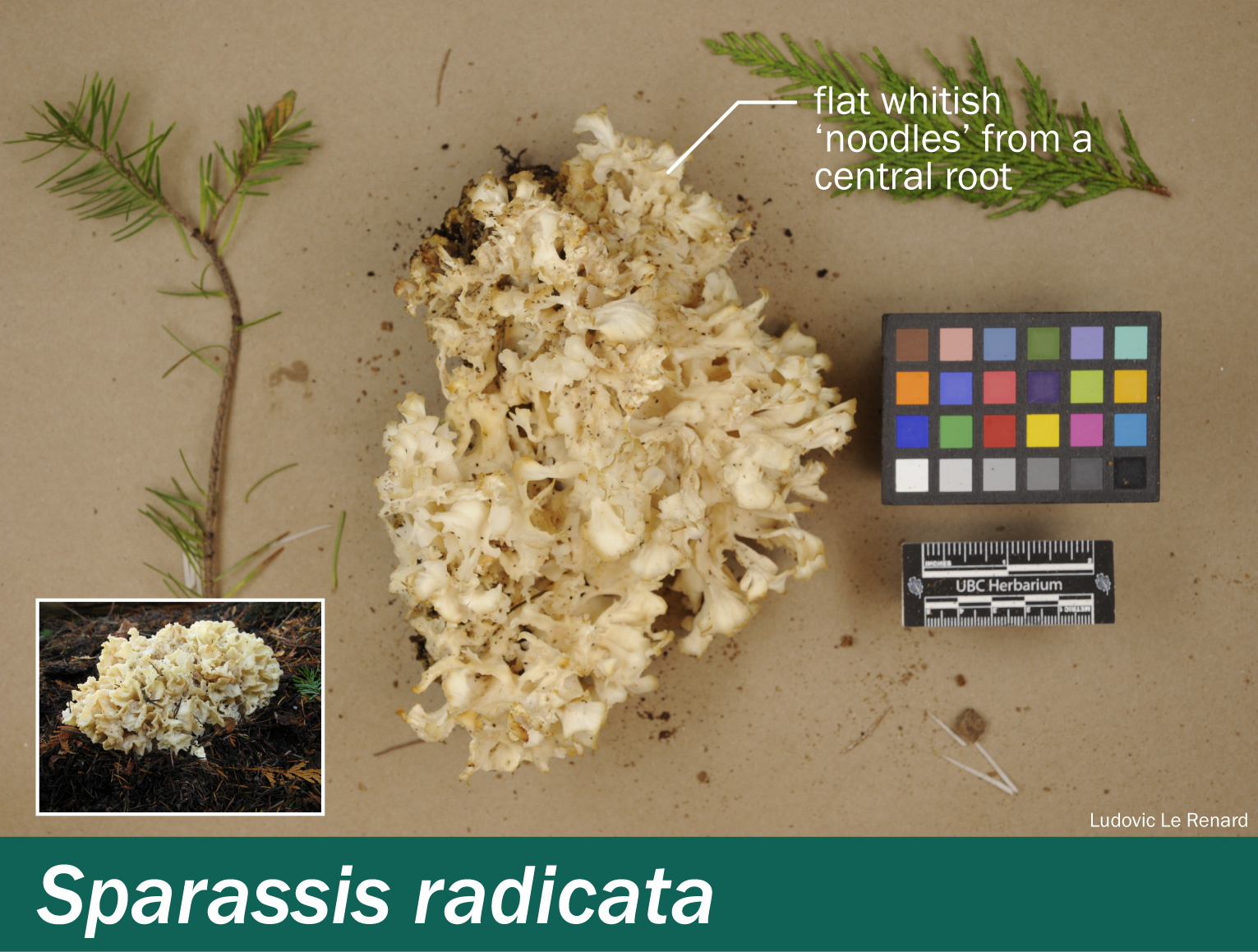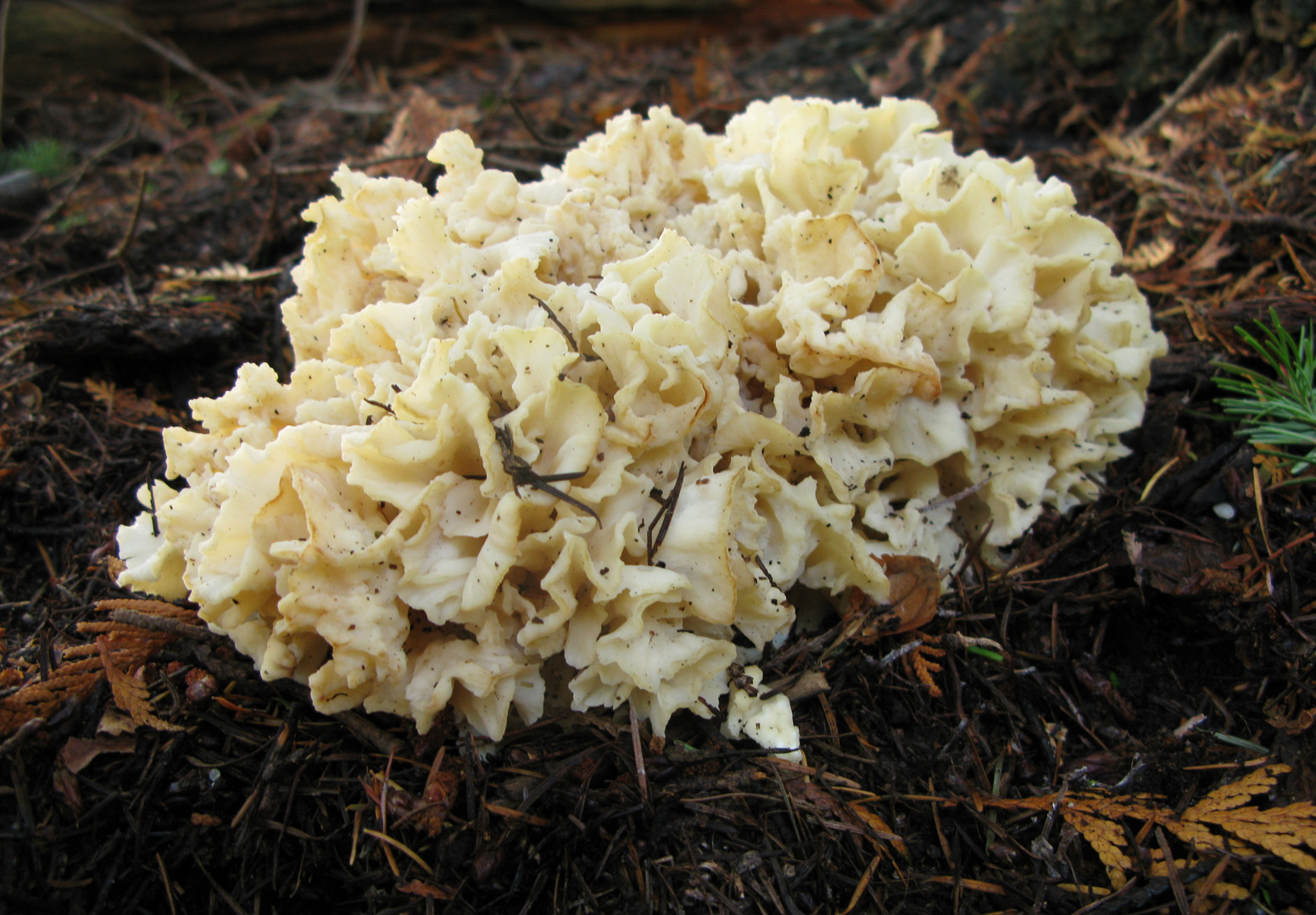Sparassis radicata — Cauliflower mushroom
The fruitbodies are 10–50 cm across and 10–20 cm high and shaped like a plate full of cream-coloured, flat noodles. Each mushroom consists of a mass of leafy, ruffled white to yellowish lobes. Lobes are around 15–25 mm wide, firm. Old specimens become yellow.
Odour: Fragrant to negligible.
Stem: 5–15 cm long x 3–5 cm wide, tapering, attached to living, dying or dead tree roots.
Ring or veil: None.
Cup: None.
Spores: 5–6.5 x 3.5–4 µm, smooth.
Habitat: On the ground, on roots or at the base of dead trunks of Douglas fir (Pseudotsuga menziesii) or spruce (Picea sitchensis); in coastal California near pine (Pinus spp.). Probably a parasite on living trees, and able to form fruitbodies annually for several years on dead roots and trunks.
Geographic distribution: Throughout the conifer forests of western North America.
Treatment: Contact your regional Poison Control Centre if you or someone you know is ill after eating Cauliflower mushrooms. Poison Centres provide free, expert medical advice 24 hours a day, seven days a week. If possible, save the mushrooms or some of the leftover food containing the mushrooms to help confirm identification.
Poison Control:
British Columbia: 604-682-5050 or 1-800-567-8911.
United States (WA, OR, ID): 1-800-222-1222.


